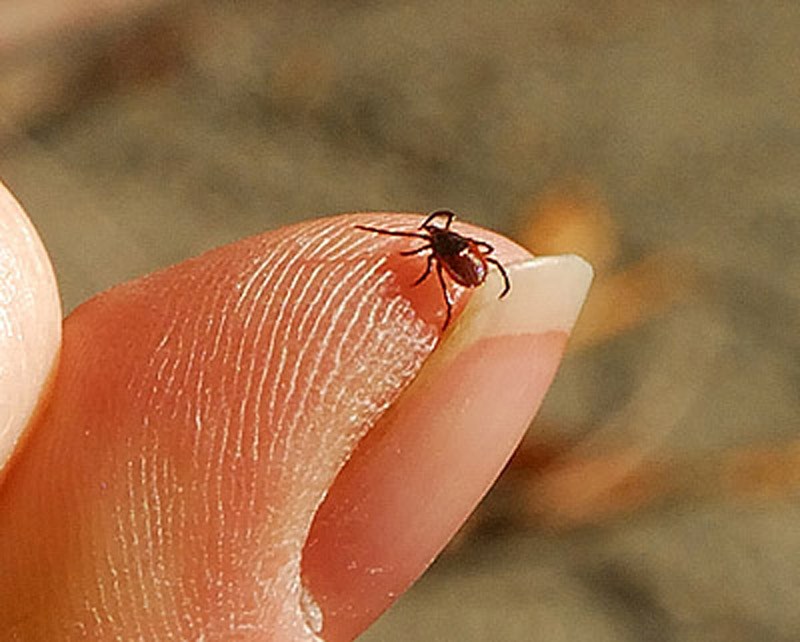The first case of tick paralysis ever recorded in a wild animal was identified on the Sunshine Coast recently with the help of the Gibsons Wildlife Rehabilitation Centre (GWRC).
Hikers found a snowshoe hare seemingly paralyzed from the waist down while out on a trail near Burnett Road in March of this year. The rabbit was brought to GWRC where Clint and Irene Davy examined it and found engorged ticks feeding on the animal’s neck.
The ticks were removed and the animal was placed in a kennel and allowed to rest, however, it soon stopped breathing and died.
The Davys were unsure what had happened, but because they were already involved in a tick study being done by Ontario-based researcher John D. Scott they sent the ticks off to Scott for examination.
After about 100 hours of examination and research Scott surmised the western blacklegged ticks sent in caused the snowshoe hare to become paralyzed and led to its death.
“During tick feeding, Ixodes pacificus (blacklegged tick) females expel neurotoxins which impede the electrical conductivity at nerve endings. Consequently, brain signals fail to reach body parts. In this case, the snowshoe hare could not propel itself,” Scott said. “Based on clinical and laboratory findings, we concluded this snowshoe hare had tick paralysis. In this case of tick paralysis, the engorged ticks had been feeding for at least four days. If ticks are removed sooner after attachment, tick paralysis can normally be reversed.”
While this is the first reported case of tick paralysis in a wild animal, Scott said tick paralysis has been found in pets and people in the past. He cautions Coasters to be careful when out in the woods or grassy areas.
In addition to tick paralysis Scott noted Lyme disease has been found in ticks on the Sunshine Coast. Lyme disease can attack different organs, joints and the nervous system if not treated with antibiotics soon after infection.
“There’s an endemic area for Lyme disease in the Halfmoon Bay and Sechelt area in there in particular,” Scott said, noting Lyme Disease was first reported in ticks locally back in the 1990s.
He encourages pet owners to protect their furry friends from ticks by using topical tick and flea medications like Revolution and to remove any ticks found on pets or people promptly.
“The best way to remove them is to use fine pointed stainless steel tweezers,” Scott said. “Basically the best approach is to come in from the side and get down in there as close to the skin as you can and tighten up the tweezers and then pull steady but gradually straight out.”
If you are concerned about the possibility of Lyme disease Scott recommends taking the tick into your doctor or veterinarian’s office to be sent away to be checked.
If the tick tests positive for Lyme a short course of antibiotics can cure the disease, but only if caught soon enough.



